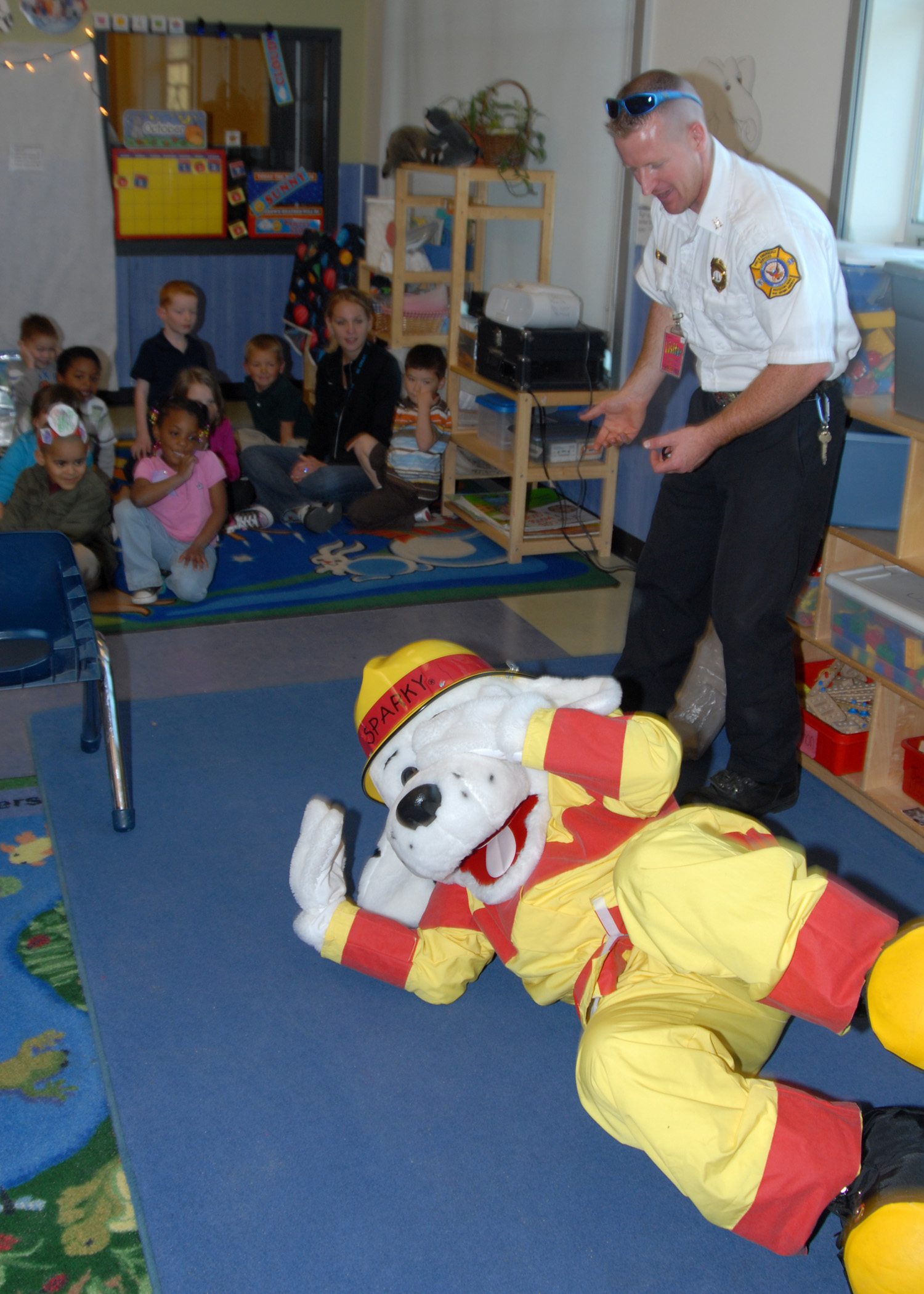Did you know October is Fire Prevention and Safety Month? Every October, local fire stations visit schools nationwide and talk about fire safety. There is a lot of language involved in fire safety and a lot of information for children to understand and know. So its a good idea to take some time and review fire safety with your students at school and your children at home.
Fire Safety: What to discuss?

Also its great vocabulary to discuss the parts of a firefighters uniform: fire-retardant pants, jacket, helmet with visor (so they can see), mask (so they can breath), might see them carrying an axe (so they can get to anyone locked or stuck in the house), etc. You also take time to discuss the equipment a firefighter uses (firetrucks, hoses, ladders, etc.).




Did you know October is Fire Prevention and Safety Month? Every October, local fire stations visit schools nationwide and talk about fire safety. There is a lot of language involved in fire safety and a lot of information for children to understand and know. So its a good idea to take some time and review fire safety with your students at school and your children at home.
Fire Safety: What to discuss?
- The importance of a WORKING FIRE ALARM one each floor of the house. Make sure yours is in working order and had fresh batteries.
- What a firefighter looks like in his gear! It is important for children to understand what a firefighter will look like when fully dressed. The helmet can be pretty intimidating for children so you must explain to them that this person is a safe person and if your child is in a fire they should not be afraid of a firefighter!
- Stop, Drop, Roll! Discuss what children should do if they find their clothes are on fire. Practice stopping, dropping and rolling on the ground. I saw a PK teacher once put felt flames on each child's clothing and they practiced "Stop, Drop, and Roll!" over and over so the children would remember it.

- What to do if there is smoke in your house? Discuss with your children how to crawl along the floor if they see or smell smoke and how to touch the door first to feel if it is hot before they open it.

- Fire Escape Plan: It is usually recommended to have at least 2 exit routes planned AND practiced several times with your children (this is done in schools via fire drills and should also be done at home). Remember not only to discuss the plan but to have a meet up spot so your children know where to look for you!


- If you have a fire extinguisher and your child is old enough to understand how to use it, discuss PASS!
- Don't forget 911! Don't forget to discuss with your children how they can call for help by pushing 9-1-1! Practice it often (especially for young children, who many not know the numbers on the phone, they can memorize their placement with enough practice)
Make a Firetruck out of basic shapes!
 |
| Go to Teach Preschool blog for more details: http://www.teachpreschool.org/2011/10/we-made-shapely-fire-trucks-in-preschool/ |
Hand art Fireman
 |
| Go to Tippytoe crafts for more details: http://tippytoecrafts.blogspot.com/2011/10/five-little-firefighters.html |
Fire Safety Dice Game
 |
| Go to First Grade Garden for more details: http://first-grade-garden.blogspot.com/search/label/Freebies?updated-max=2011-10-20T21:29:00-05:00&max-results=20&start=22&by-date=false |
Happy talking and learning about fire safety!!!

Interesting Post on Fire Safety Signs. I read your post, in which you gave valuable information about fire safety products and explain some important steps to stop or prevent the fire in your home and industries.
ReplyDeleteAn alarm system is a system of security equipment intended to keep a home/
ReplyDeletebusiness secured and safe. Although the main purpose of alarm systems is to provide
protection and security, they have a range of functions including intruder protection,
fire alarms, and medical emergency response capabilities. You could very well have an
alarm specialized in all three types of potential emergencies depending on your needs.
fire alarm